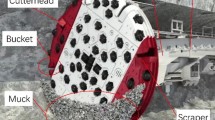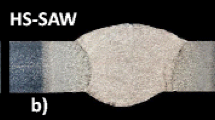Abstract
Recycling retired cars can relieve the environmental pollution and resource waste efficiently. However, a few publications can be found on the failure mechanisms and optimization method of recycling equipment, shredders. Thus, the failure mechanisms and structural optimization of shredder hammers for retired cars are studied aiming improving shredding efficiency and reducing cost. Failure types of shredder hammer are studied theoretically, and it is found that wear failure and fatigue failure are the two main failure types of shredder hammer. The shredding process of metal scraps is analyzed by finite element method, and it can be divided into four stages based on the stress states: initial stage, collision stage, grinding stage and separation stage. It is proved that the shredding efficiency can be improved by increasing cutouts on the hammer head. Finally, it is determined that the hammer with two cutouts is the optimal structure for metal scraps, which can improve the shredding efficiency by 20% and lengthen the hammer life by 15%. This study provides scientific basis for the industry application and theoretical foundation for further research.
Similar content being viewed by others
References
MILLET D, YVARS P A, TONNELIER P. A method for identifying the worst recycling case: Application on a range of vehicles in the automotive sector[J]. Resour. Conserv. Recycl., 2012: 16: 1–13.
SACHDEV A K, KULKARNI K, FANG Z Z, et al. Titanium for automotive applications: challenges and opportunities in materials and processing[J]. JOM, 2012, 64: 553–565.
NAYAK N, APELIAN D. Opportunities and barriers to resource recovery and recycling from shredder residue in the united states[J]. JOM, 2014, 66: 2367–2376.
XU Y C, SABCHEZ J F, NJUGUNA J. Cost modelling to support optimised selection of end-of-life options for automotive components[J]. Int J Adv Manuf Technol, 2014, 73: 399–407.
KING A M, BURGGESS S C, IJOMAH W, et al. Reducing waste: repair, recondition, remanufacture or recycle?[J] Sustain Dev, 2006, 14: 257–267.
CHE J, YU J, KEVIN R S. End-of-life vehicle recycling and international cooperation between Japan, China and Korea: Present and future scenario analysis[J]. J. Environ. Sci, 2011: 23(Supp): S162–S166.
YUNG W K C, CHAN H K, CHOI A C K, et al. An environmental assessment framework with respect to the requirements of Energy-using products directive[J]. Proc. IMechE, Part B: J. Engineering Manufacture, 2008, 222: 643–651.
DHINGRA R, DAS S. Life cycle energy and environmental evaluation of downsized vs. lightweight material automotive engines[J]. J. Cleaner Prod, 2014; 85: 347–358.
SANDER S, SCHUBERT G. Size reduction of metals by means of swing hammer shredders[J]. Chem Eng Technol, 2003, 26: 409–415.
KIRCHNER J, TIMMEL G, SCHUBERT G. Comminution of metals in shredders with horizontally and vertically mounted rotors-microprocesses and parameters[J]. Powder Technol, 1999, 105: 274–281.
SANDER S, BERNOTAT S. Comminution of non-brittle materials[J]. Int. J. Miner. Process, 2004, 74(S): S19–S30.
ABOUSSOUAN L, RUSSO Ph, PONS M N, et al. Steel scrap fragmentation by shredders[J]. Powder Technol, 1999, 105: 288–294.
BRUSA E, MORSUT S, BOSSO N. Dynamic behavior and prevention of the damage of material of the massive hammer of the scrap shredding machine[J]. Meccanica, 2014, 49: 575–586.
SANDER S, SCHUBERT G, JACKEL H G. The fundamentals of the comminution of metals in shredders of the swing-hammer type[J]. Int. J. Miner. Process, 2004, 74S: S385–S393.
LI Jun, LIU Jiangxiong, YANG Bangcheng, et al. Research on energy consumption of light metal scrap shredding process[J]. Journal of Mechanical Engineering, 2013, 48(2): 71–77.
LIU Jianxiong, YANG Bangcheng, LI Ziliang, et al. The study on shredding modes of light metal scrap[J]. Journal of Mechanical Engineering, 2011, 47: 48–55.
SCHIJVE J. Fatigue of structures and materials in the 20th century and the state of the art[J]. Int. J. Fatigue, 2014, 25: 679–702.
HAISAM IM, KHARMANDA G, CHARKI K. Reliability-based design optimization for fatigue damage analysis[J]. Int J Adv Manuf Technol, 2015, 76: 1021–1030.
BUHL S, LEINENBACH C, SPOLENAK R, et al. Failure mechanisms and cutting characteristics of brazed Failure mechanisms and cutting characteristics of brazed[J]. Int J Adv Manuf Technol, 2013, 66: 775–786.
SUN Jiao, CHEN Songying, QU Yanpeng, et al. Review on stress corrosion and corrosion fatigue failure of centrifugal compressor impeller[J]. Chinese Journal of Mechanical Engineering, 2015, 28(2): 217–225.
YUE Caixu, WANG Bo, LIU Xianli. Adiabatic shear mechanisms for the hard cutting process[J]. Chinese Journal of Mechanical Engineering, 2015, 28(3): 592–598.
DENG Song, HUA Lin, HAN Xinghui et al. Investigation of rolling contact fatigue cracks in ball bearings[J]. Int J Fract. 2014; 188: 71–78.
RUSSO P, ABOUSSOUAN L, BIRAT J P, et al. Mechanical and metallurgical study of the fragmentation of end-of-life goods in a scrap shredder[J]. Int. J. Miner. Process, 2004, 74S: S395–S403.
WUSTENBERG D, KASPER J. Required energy and structural breakdown at the process of dynamic cutting-comminution of polypropylene and aluminum[J]. Int. J. Miner. Process, 2004, 74(S): S417–S424.
GILL S S, SINGH H, SINGH R, et al. Cryoprocessing of cutting tool materials-a review[J]. Int J Adv Manuf Technol, 2010, 48: 175–192.
CUI Fengkui, WANG Xiaoqiang, ZHANG Fengshuo, et al. Metal flowing of involute spline cold roll-beating forming[J]. Chinese Journal of Mechanical Engineering, 2015, 26(5): 1056–1062.
NA Jingxin, CHEN Wei, One step positive approach for sheet metal forming simulation based on quasi-conjugate-gradient method[J]. Chinese Journal of Mechanical Engineering, 2013, 26(4): 730–736.
DONG Jinbo, REN Sijing. Method of improving cycle life of the hammer in a crusher[J]. Coal Mine Machinery, 2005, 6: 137–138.
ZHOU Xianyan, HU Zhili, TAO Yijun, et al. Study on the stress characteristic and fatigue life of the shredder pin[J]. Engineering Failure Analysis, 2016, 59: 444–455.
Author information
Authors and Affiliations
Corresponding author
Additional information
Supported by Innovation Team Development Plan(Grant No. IRT13087), Major Scientific and Technological Innovation Project in Hubei Province, China(Grant No. 2015AAA014), and Fundamental Research Funds for the Central Universities, China(Grant No. 2015-yb-010)
ZHOU Xianyan, born in 1991, is currently a PhD candidate at Hubei Key Laboratory of Advanced Technology for Automotive Components, Wuhan University of Technology, China. She received her bachelor degree from Wuhan University of Technology, China, in 2013. His research interests include modern automotive design and manufacture.
HUA Lin received his MS degree in pressure processing from Wuhan University of Technology, China, in 1985. He received his PhD degree in mechanical engineering from Xi’an Jiaotong University, China, in 2000. He is currently a dean at School of Vehicle Engineering, Wuhan University of Technology, China. His research interests include advanced forming and equipment technology.
Rights and permissions
About this article
Cite this article
Zhou, X., Hu, Z., Tao, Y. et al. Failure mechanisms and structural optimization of shredder hammer for metal scraps. Chin. J. Mech. Eng. 29, 792–801 (2016). https://doi.org/10.3901/CJME.2016.0415.053
Received:
Revised:
Accepted:
Published:
Issue Date:
DOI: https://doi.org/10.3901/CJME.2016.0415.053




